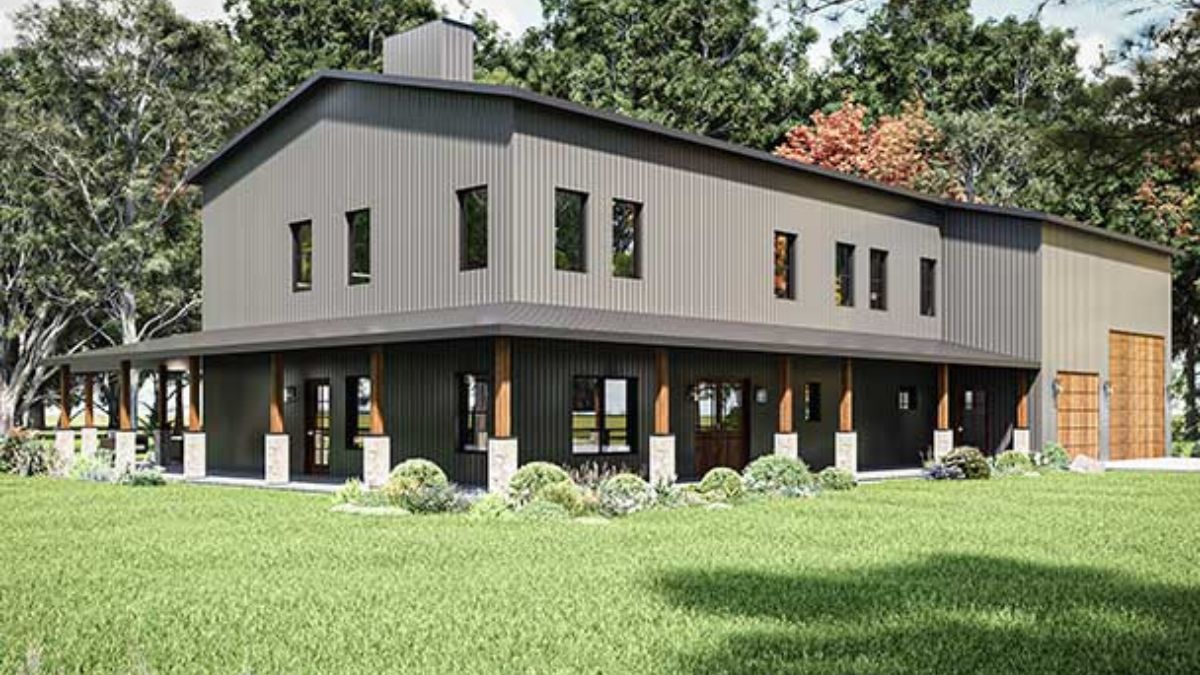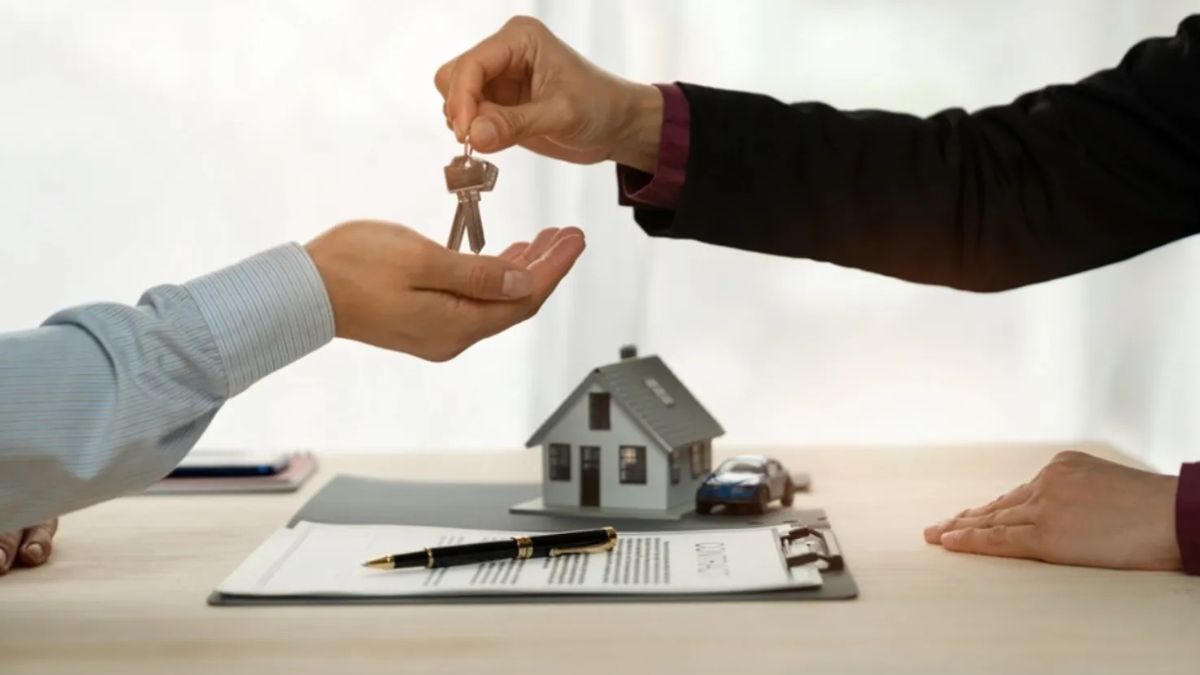REAL ESTATE
Home Buying Tips: Virtually Touring Homes Before Making a Decision

The digital era has dramatically transformed how we approach real estate, with the introduction of virtual home tours being a game-changer for homebuyers everywhere. Particularly for those searching for homes for sale in Hickory, NC, the ability to explore potential new homes without stepping out of your living space is unprecedented. Virtual tours offer buyers a preliminary exploration opportunity, saving them both time and travel expenses, which is especially appealing for those considering relocation or assessing markets from afar.
Beyond sheer convenience, virtual tours reflect a broader shift toward digital solutions in real estate. Buyers are no longer constrained to geographical limitations or traditional open house schedules. Instead, they can filter and prioritize potential homes through extensive virtual visits, making subsequent in-person views more targeted and meaningful. This capability effectively reduces the number of unnecessary site visits, enabling buyers to focus on properties that genuinely resonate with their needs and preferences.
Understanding Virtual Home Tours
Virtual home tours can be broadly defined as digital representations of properties, allowing potential buyers to engage with spaces in an immersive way. These tours range from basic slideshows and panoramic images to more advanced 3D simulations and live video walkthroughs. The core objective is to reproduce the experience of being inside the property, providing detailed visual insights into the home’s layout, design, and overall vibe.
Benefits of Virtual Home Tours
Virtual home tours offer numerous benefits to buyers. They reduce the time and financial burden of home searching by allowing buyers to visit multiple homes virtually without leaving their current location. This can lead to faster decision-making and expand the market reach for potential buyers. Virtual tours also offer convenience and flexibility, allowing prospective buyers to assess property features at leisure. Buyers must focus on critical aspects such as room dimensions, natural lighting, floor plan compatibility, potential renovation opportunities, and customization of spaces to ensure a comprehensive virtual tour experience.
Tools And Technologies for Virtual Tours
Today, diverse technological tools are employed to create compelling virtual tours, with Matterport being a notable example. This platform enables realistic 3D tours that allow users to navigate spaces as if they were onsite. Other technologies, such as interactive floor plans, further enhance the experience by comprehensively understanding a home’s layout. As highlighted by TechCrunch, these advancements in real estate technology continue to evolve, supporting more engaging and efficient home searches.
Limitations Of Virtual Home Tours
Despite their many advantages, virtual home tours have inherent limitations. They cannot fully capture the tangible experience of visiting a property, such as detecting subtle odors, neighborhood ambiance, or the specific “feel” of the environment. Following up virtual tours with live video calls with agents who can provide detailed descriptions and answer questions in real time is advisable to compensate for these limitations. This strategy ensures buyers make well-informed decisions with visual and interactive insights into the property.
The Future Of Virtual Tours In Real Estate
The future likely holds even more integration of augmented reality (AR) and virtual reality (VR) technologies in real estate, promising more immersive and dynamic property viewing experiences. These technological advancements will further enhance virtual tours, almost indistinguishable from physical visits. As real estate transitions towards these advanced digital solutions, buyers and sellers will benefit from greater market efficiency and accessibility.
Conclusion
Virtual home tours are a practical and strategic addition to the modern home-buying toolkit. These tours streamline the search process and expand the market beyond local parameters by facilitating preliminary property evaluations. While physical visits for final decision-making should ideally follow virtual tours, they offer a productive starting point. Begin exploring virtual options today, and you may soon discover your ideal home from the comfort of your current residence.
REAL ESTATE
How Experts Determine the True Value of a Property

Introduction
Accurately determining the true value of a property is both an art and a science, blending the invaluable, seasoned insights of real estate professionals with the precision and speed of cutting-edge technologies. For both experienced investors and first-time homebuyers, knowing how real estate values are assessed can drastically impact your decision-making process and financial outcomes. A nuanced understanding of these fluctuating values can not only help you buy or sell confidently but also protect your investments in an unpredictable real estate landscape.
For those seeking to navigate the complexities of property transactions, obtaining dedicated guidance from local experts can make a significant difference. Menlo Park CA real estate agents possess not only technical proficiency in property valuation but also a deep familiarity with neighborhood trends, off-market activity, and regional demand drivers—all of which can profoundly influence a home’s true worth. Leveraging both historical and real-time data, these professionals provide vital support for accurate evaluations, strategic negotiations, and successful closings.
From the foundational approaches that lean heavily on time-tested data and professional judgment to the latest advancements in artificial intelligence and big data analytics, the modern real estate toolkit is as diverse as it is powerful. Both sellers and buyers now have access to increasingly sophisticated tools, technologies, and methodologies, each bringing its own strengths and limitations to the valuation process. This comprehensive blend offers unmatched accuracy and insight, providing property owners and investors with actionable information tailored to their unique needs and goals.
Traditional Appraisal Methods
One of the foundational approaches to property valuation is the sales comparison method, which remains the cornerstone of professional residential appraisal. This method relies on analyzing recent sales data of properties with similar characteristics—such as size, age, architecture, and condition—within the same or nearby neighborhoods. By closely examining these comparable sales, appraisers can generate a substantiated estimate of a property’s market value, adjusting for distinct features or upgrades, and taking into account current market trends.
In addition to the sales comparison method, appraisers often employ the cost approach and the income approach to accommodate unique scenarios or property types. The cost approach estimates the cost of rebuilding the property from scratch in today’s market, accounting for land value and depreciation due to factors such as wear and age. This method is particularly useful for new constructions, custom homes, or properties with few genuine comparables. Meanwhile, the income approach is commonly applied to rental units, apartment complexes, or commercial real estate, focusing on the property’s potential for generating income. This method evaluates the net operating income the property can generate and applies capitalization rates to estimate its overall value—a model favored among real estate investors.
Broker’s Price Opinion (BPO)
When a swift, cost-effective, yet knowledge-driven estimate is required, many lenders and property owners turn to a Broker’s Price Opinion (BPO). This informal valuation is conducted by licensed real estate agents or seasoned brokers who have direct, up-to-date experience in the local market. Rather than a comprehensive appraisal, the BPO process focuses on assessing recent sales and active listings of comparable properties, as well as considering regional supply and demand dynamics, to estimate a price range within which the property could realistically sell.
BPOs are especially valuable tools in time-sensitive situations, such as foreclosures, short sales, refinancing, or reviewing real estate portfolios. Their pragmatic nature enables banks, investors, and homeowners to obtain quick, well-informed opinions that reflect current conditions—without incurring the time and expense of a formal appraisal. While not a replacement for a certified appraisal in all cases, BPOs serve as a practical solution when rapid decision-making is essential, and the stakes are high.
Automated Valuation Models (AVMs)
The digital revolution in real estate has ushered in increasingly sophisticated Automated Valuation Models (AVMs), which can deliver instant property value estimates by analyzing a vast array of data points. These models leverage machine learning algorithms, sales histories, physical characteristics, tax assessments, and market trends to assess property values with impressive speed and scalability. AVMs quickly sift through millions of records, recognizing regional patterns and price shifts that could take a human much longer to detect.
AVMs are now a familiar feature on real estate listing portals, mortgage lenders’ websites, and bank processes, enabling both industry professionals and consumers to check property values in real-time. However, while their efficiency is unmatched for standard residential markets with robust sales data, AVMs might not fully capture the nuances of luxury estates, waterfront homes, or highly customized properties—cases where human expertise remains indispensable. According to Forbes, AVMs are most effective when used to supplement, rather than wholly replace, expert judgment—especially for high-value or unconventional properties where the stakes are exceptionally high, or the data is less consistent.
Technological Innovations in Property Valuation
Recent breakthroughs in artificial intelligence, such as deep learning and computer vision, are enabling a new generation of property valuation tools. These advanced systems can evaluate property images, floor plans, and even neighborhood streetscapes, extracting critical details that influence property value but may be overlooked by more traditional models. Innovations in self-supervised learning enable AI to analyze vast libraries of property photos, detecting everything from curb appeal and landscaping quality to interior renovations and material finishes, thereby helping to refine and support automated valuations.
Leading real estate platforms and start-ups alike are now deploying these AI-driven solutions to enhance online property valuations, often integrating them with satellite imagery and drone photography for unprecedented detail and accuracy. As a result, buyers and sellers are presented with more richly informed starting points, facilitating more productive conversations and negotiations with human experts during the next steps of any real estate transaction. While AI cannot yet replicate the full depth of human judgment, it dramatically increases the speed, consistency, and accessibility of valuations for all stakeholders.
Importance of Accurate Measurements
One essential, sometimes underestimated element of property valuation is the accuracy of onsite measurements. Even small discrepancies—such as overstated living area or miscounted bedrooms—can translate into thousands or tens of thousands of dollars in price differences. Reliability in measurements is so crucial that advanced digital tools are now becoming standard in the industry. Laser-based distance measurers, 3D cameras, and cutting-edge floor plan apps are used to map spaces precisely and create reliable documentation for appraisals and listings alike.
Property professionals are increasingly adopting standardized measurement protocols (such as ANSI standards in the U.S.) to promote fairness and transparency in the industry. These practices help reduce disputes, eliminate confusion, and foster more efficient and trustworthy transactions. As The New York Times underscores, accurate and transparent measurements empower all parties involved, setting clear expectations and enabling smoother real estate closings.
Final Thoughts
The true value of a property emerges from a careful synthesis of methodologies: the experience of licensed appraisers, the efficiency of agents and brokers, and the analytical power of machine learning. By combining traditional appraisal techniques, robust BPOs, and technologically advanced AVMs, the real estate industry ensures property valuations are as accurate, reliable, and fair as possible. As innovation continues to drive new possibilities, buyers, sellers, and investors can look forward to even greater clarity and confidence when determining property value.
REAL ESTATE
Key Considerations: What Buyers Should Look for When Comparing Barndominium House Plans

Building a barndominium is an exciting opportunity for Canadian homeowners to create a unique living space that blends comfort, durability, and practicality. However, choosing the right barndominium house plans is crucial for ensuring the home meets long-term needs, stays within budget, and aligns with your lifestyle. With many options available, understanding what to look for can make the process smooth and stress-free.
This guide will explore the key factors buyers should consider when comparing barndominium house plans, providing actionable tips and insights for homeowners across Canada.
Start with Your Lifestyle Needs
Every homeowner has unique requirements for living space, functionality, and design. When reviewing barndominium house plans, consider:
- The number of bedrooms and bathrooms needed
- Open or segmented living spaces
- Integration of work or hobby areas
- Storage needs for tools, vehicles, or equipment
Identifying lifestyle priorities early helps narrow down plans that will truly support day-to-day living and long-term comfort.
Consider Floor Layout and Flow
A well-designed layout ensures that the home feels spacious, functional, and easy to navigate. Pay attention to how rooms connect, hallway widths, and the balance between private and communal spaces.
Open-concept designs are popular in barndominiums because they offer flexibility for furniture placement, gatherings, and interior customization. On the other hand, some homeowners prefer segmented layouts for privacy or specific functional purposes.
Evaluate Storage and Multi-Use Spaces
Barndominiums often combine residential and functional areas, such as workshops, garages, or storage zones. Look for plans that include:
- Spacious garages or bays
- Multi-purpose rooms that can evolve with your needs
- Adequate closet and pantry space
Plans that thoughtfully integrate storage will improve daily efficiency and keep living areas organized.
Check Structural Design and Durability
The strength of a barndominium comes from its structural design. When comparing plans, evaluate:
- Wall and roof framing materials
- Ceiling height options
- Load-bearing capacities for equipment or upper floors
A robust plan ensures the home withstands Canadian weather conditions and provides long-term stability.
Assess Energy Efficiency and Insulation Options
Energy efficiency is a key consideration for sustainable and cost-effective living. Many barndominium house plans include recommendations for:
- Insulation levels for walls and roofs
- Efficient window placement for natural light
- Heating and cooling system compatibility
These features not only reduce utility costs but also improve comfort year-round.
Flexibility for Future Expansion
Barndominiums are often chosen for their adaptability. Check whether the house plans allow for future additions, such as:
- Extra bedrooms or bathrooms
- Workshops or storage extensions
- Outdoor living areas or covered patios
Plans with built-in flexibility will save homeowners time and money if needs change in the future.
Design Aesthetics and Personal Style
Your barndominium should reflect your personality and style preferences. Compare the exterior and interior aesthetics of different plans, including:
- Rooflines and siding options
- Window and door placement
- Interior finishes and open spaces
Choosing a plan that aligns with your taste ensures the home will feel inviting and uniquely yours.
Budget Alignment and Cost Transparency
Even the best-designed plan won’t succeed if it exceeds your budget. Evaluate each plan’s estimated construction costs, including:
- Materials and structural components
- Labor requirements (DIY vs professional)
- Optional upgrades or customization features
Ensuring the plan fits your financial scope helps prevent surprises during construction and keeps the project on track.
Working with Trusted Providers
Partnering with an experienced barndominium provider makes a huge difference. Companies like Barndo Canada, located at 37 Sandiford Dr #413, Whitchurch-Stouffville, ON L4A 3Z2, Canada, and available at +1 833-812-1687, offer professional guidance to help homeowners choose the right house plan. Their expertise ensures structural compliance, practical layouts, and the successful realization of your dream home.
Comparing Barndominiums for Sale Ontario
For buyers who prefer move-in-ready options, examining barndominiums for sale Ontario can provide insight into practical layouts and design choices. Comparing these homes against custom plans can help refine your vision and highlight features you want in a new build.
By studying existing examples, homeowners gain a better understanding of space utilization, flow, and customization potential.
Conclusion: Making an Informed Choice
Choosing the right barndominium house plans is more than just selecting a layout—it’s about envisioning how the home will function, grow, and fit your lifestyle. By considering factors like floor layout, storage, structural design, energy efficiency, and future flexibility, Canadian homeowners can confidently select a plan that supports both comfort and practicality.
Whether comparing custom designs or exploring barndominiums for sale Ontario, taking the time to evaluate plans carefully ensures a smooth construction process and a home that truly meets your long-term needs.
REAL ESTATE
Mietmakler vs. DIY Renting: Which Approach Is Right for You?

Introduction to Renting: Why It’s Important to Find the Right Approach
Renting a home is one of the most significant decisions many people face. It’s not just about finding a place to live but also about creating a comfortable environment that suits your lifestyle and needs. With so many options available, navigating the rental landscape can be overwhelming. One question often arises: Should you hire a Mietmakler or go down the DIY path?
Both approaches come with their own sets of advantages and challenges. Whether you’re looking for convenience or eager to save costs, understanding each option can help you make an informed choice tailored to your unique circumstances. Let’s dive into what it means to work with a Mietmakler versus taking on the renting process yourself!
What is a Mietmakler?
A Mietmakler is a rental broker who specializes in helping individuals find the perfect property to rent. These professionals know the market inside and out, which can be a significant advantage for both landlords and tenants.
Typically, a Mietmakler will assist with various aspects of the renting process. This includes searching for available properties that match your criteria, arranging viewings, and facilitating communication between you and potential landlords.
Mietmaklers also provide valuable insights into rental prices and local neighborhoods. Their expertise can help you navigate legal paperwork or negotiate lease terms effectively.
For many people unfamiliar with the rental landscape, hiring a Mietmakler offers peace of mind. They take on much of the legwork involved in finding a home while ensuring compliance with local regulations.
Pros and Cons of Using a Mietmakler
Using a Mietmakler can simplify the renting process. They have extensive knowledge of the local market and can help you find properties that meet your criteria quickly.
However, this convenience often comes with a cost. Mietmaklers typically charge fees, which can be a significant percentage of your first month’s rent or even more. This added expense may not fit everyone’s budget.
Another advantage is their negotiation skills. A skilled agent can advocate on your behalf, potentially securing better rental terms than you could achieve alone.
On the flip side, relying solely on an agent might reduce personal involvement in the searching process. Some renters prefer to take control and explore options themselves rather than waiting for someone else’s recommendations.
Weighing these pros and cons will help clarify if engaging a Mietmakler aligns with your needs.
The DIY Approach to Renting
The DIY approach to renting offers a hands-on experience that many find rewarding. You take charge of the entire process from start to finish. This can mean searching for listings, scheduling viewings, and communicating directly with landlords.
One major advantage is the potential savings on fees. By cutting out the middleman—like a Mietmakler—you keep more money in your pocket. Plus, you gain invaluable knowledge about the rental market in your desired area.
However, it does come with challenges. Navigating lease agreements or understanding tenant rights can be daunting without expert guidance. Time investment also becomes crucial; finding the right place might require extensive research and legwork.
For those who thrive on independence and enjoy problem-solving, this method could be ideal. It’s all about weighing what matters most to you: control over costs or convenience through professional assistance.
Pros and Cons of DIY Renting
DIY renting offers a hands-on approach that can be incredibly rewarding. You have complete control over the entire process, from choosing the location to negotiating terms directly with landlords. This independence often leads to personalized experiences tailored to your unique needs.
However, there are challenges involved. Without a Mietmakler’s expertise, you might miss out on important details or local market trends. Navigating legal requirements and paperwork can also feel overwhelming for first-time renters.
Additionally, time commitment is another factor. Searching for listings, scheduling viewings, and handling communications takes effort that some may not have available in their busy lives.
While DIY renting fosters autonomy and potential savings on fees, it requires diligence and knowledge of the rental landscape to succeed effectively.
Factors to Consider When Choosing Between a Mietmakler or DIY Approach
When deciding between a Mietmakler and DIY renting, several factors come into play.
First, assess your time availability. If you have a busy schedule or limited experience in real estate, a Mietmakler can save you valuable hours.
Next, consider your budget. Employing a Mietmakler usually involves fees that could range from one to two months’ rent. Calculate whether these costs fit within your financial plan.
Local knowledge is another crucial element. A proficient Mietmakler has insights about neighborhoods and market trends that might elude the average renter.
Your comfort level with negotiations also matters. If discussing terms isn’t something you enjoy or excel at, having an expert by your side can make all the difference.
Think about how much control you want over the process. With DIY renting, you’ll steer everything but may face challenges without professional help along the way.
Tips for Success with Either Approach
Choosing between a Mietmakler and DIY renting can be daunting. To ensure success, start with thorough research. Gather information about local rental markets and trends to inform your decisions.
If you opt for a Mietmakler, communicate clearly what you’re looking for. Provide them with your preferences and budget to help narrow down the options effectively.
For those taking the DIY route, create a checklist of essentials before starting your search. This will keep you organized and focused on properties that meet your needs.
Networking can be beneficial regardless of the approach you choose. Connect with friends or family who have recently rented; they might share valuable insights or recommend trusted resources.
Stay patient throughout the process. Finding the right rental takes time, whether you’re working with a professional or going solo. Trust in your choices as you navigate this important journey in finding a home.
Conclusion: Finding the Best Option for Your Unique Situation
Navigating the world of renting can be complex and overwhelming. Whether you choose to work with a Mietmakler or take the DIY route, it’s essential to assess your unique situation.
Consider your budget, time constraints, and personal preferences. A Mietmakler can streamline the process and offer expertise that might save you headaches down the line. However, if you’re well-versed in local markets and enjoy handling negotiations yourself, going the DIY route could lead to significant savings.
Understanding both approaches allows you to make an informed decision tailored to your needs. Whatever path you choose, ensuring that it aligns with your priorities will help pave the way for a successful rental experience.
-

 TOPIC1 year ago
TOPIC1 year ago7 Expert Tips For Choosing The Best Basement Renovation Companies
-

 TOPIC6 months ago
TOPIC6 months agoWhy Greece Katz Martian Has Everyone Talking in 2025
-

 BUSINESS7 months ago
BUSINESS7 months agoTop 5 Features of Sowix Online That Every User Should Know About
-

 TOPIC7 months ago
TOPIC7 months agoTop Features of BetterThisWorld .com You Need to Know About
-

 FINANCE11 months ago
FINANCE11 months agoHow TraceLoans Can Simplify Your Finances
-

 TOPIC1 year ago
TOPIC1 year agoWhy Large Waterproof Outdoor Rugs Are Essential for All Outdoor Spaces
-

 BIOGRAPHY10 months ago
BIOGRAPHY10 months agoFrom Reality Star to Business Mogul: Prince Narula Digital PayPal
-

 FASHION1 year ago
FASHION1 year agoHow to Layer Your White Dress for Cold Weather?
